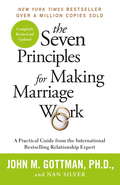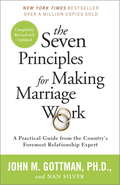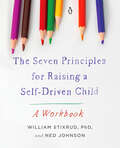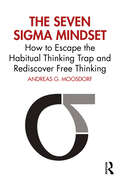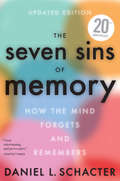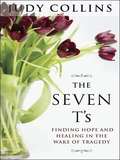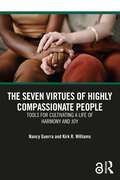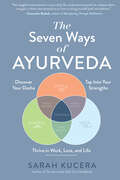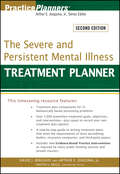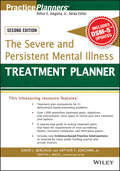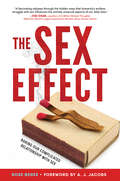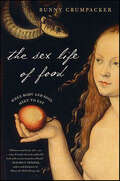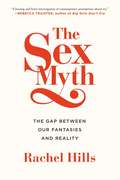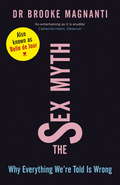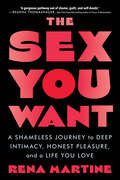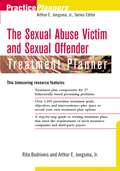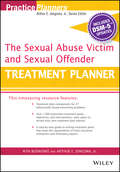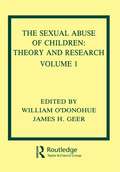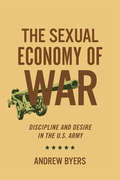- Table View
- List View
The Seven Primal Questions: Take Control of the Hidden Forces That Drive You
by Mike FosterThe Seven Primal Questions is a revolutionary new framework to understand everything about you and your relationships. The book is a practical guide to help you maximize your life by understanding your internal programming. The Primal Question is the thing underneath the thing that drives everything. And once you discover it, you can quickly overcome the challenges that have been holding you back for far too long. The book is based on over 6000 hours of one-on-one interviews on emotional needs, attachment and what makes someone supernaturally great at what they do. In the book you’ll learn which of the unique seven primal questions drives your life. You’ll also uncover your Primal Gift which is your hidden superpower that gives you an unfair advantage in life. The book will also clearly show you how your Primal Question can benefit your marriage, parenting and leadership. Take a free Primal Question Assessment at PrimalQuestion.com to better understand the forces that drive you.
The Seven Principles For Making Marriage Work
by John GottmanThe revolutionary guide to show couples how to create an emotionally intelligent relationship - and keep it on trackStraightforward in its approach, yet profound in its effect, the principles outlined in this book teach partners new and startling strategies for making their marriage work. Gottman has scientifically analysed the habits of married couples and established a method of correcting the behaviour that puts thousands of marriages on the rocks. He helps couples focus on each other, on paying attention to the small day-to-day moments that, strung together, make up the heart and soul of any relationship. Packed with questionnaires and exercises whose effectiveness has been proven in Dr Gottman's workshops, this is the definitive guide for anyone who wants their relationship to attain its highest potential.
The Seven Principles for Making Marriage Work: A Practical Guide from the Country's Foremost Relationship Expert
by Nan Silver John GottmanNEW YORK TIMES BESTSELLER • Over a million copies sold! &“An eminently practical guide to an emotionally intelligent—and long-lasting—marriage.&”—Daniel Goleman, author of Emotional Intelligence The Seven Principles for Making Marriage Work has revolutionized the way we understand, repair, and strengthen marriages. John Gottman&’s unprecedented study of couples over a period of years has allowed him to observe the habits that can make—and break—a marriage. Here is the culmination of that work: the seven principles that guide couples on a path toward a harmonious and long-lasting relationship. Straightforward yet profound, these principles teach partners new approaches for resolving conflicts, creating new common ground, and achieving greater levels of intimacy. Gottman offers strategies and resources to help couples collaborate more effectively to resolve any problem, whether dealing with issues related to sex, money, religion, work, family, or anything else. Packed with new exercises and the latest research out of the esteemed Gottman Institute, this revised edition of The Seven Principles for Making Marriage Work is the definitive guide for anyone who wants their relationship to attain its highest potential.
The Seven Principles for Raising a Self-Driven Child: A Workbook
by Ned Johnson William Stixrud PhDFrom the authors of What Do You Say? and The Self-Driven Child, a workbook of vital practices and step-by-step resources for parents striving to raise self-motivated, secure, and joyfully driven childrenA guide to move from understanding the science and value behind nonanxious parenting to developing and sharpening the essential skills parents need to be a trusted resource for growing kids.Authors William Stixrud and Ned Johnson have watched firsthand as the crisis around education and the mental health crisis in childhood have converged in the postpandemic years. Their book The Self-Driven Child was ahead of the curve in addressing the way these forces converge in adolescents at pivotal moments as children develop their sense of autonomy, ambition, self-discipline, and learning style. As the authors have continued to lecture on the book&’s subject, parents have again and again homed in on the value of the model dialogues and practice prompts.Using material from their current work with parents and children, and pulling essential principles from the science in The Self-Driven Child, this workbook guides parents to develop the practice of being a nonanxious presence in children&’s lives, as well as introducing essential skills for navigating the pressure cooker of school. With prompts to help parents diagnose and rewire their instinctual responses to stressful situations, exercises to give them the language to communicate clearly and calmly, and lists to keep anxiety responses in check and big-picture goals in view, this workbook will bring peace and clarity to parents and educators seeking to support the unique path each child traverses on the road to growing up.
The Seven Sigma Mindset: How to Escape the Habitual Thinking Trap and Rediscover Free Thinking
by Andreas G. MoosdorfLearn to retrain your mind and become more creative and productive with this step-by-step guide to replacing habitual thinking with free thinking.Unless you can name six thoughts you had today that you haven’t had before, you are a habitual thinker 99.9% of the time, just like everyone else. This is because our hard-wired survivor bias drives us to repeat mental patterns and solutions that seemed sensible in the past, and that provide comfort, social rewards and a stable identity. This means that our thinking follows a Six Sigma distribution and that only a tiny fraction of our daily thoughts are truly novel and free, which prevents us from reaching the groundbreaking solutions we need to adapt to a fast-changing world. But in this book, Andreas G. Moosdorf guides you to perceive your own habitual thinking more clearly and explore the vast, untapped potential of your own mind. Through a wealth of exercises, readers will rediscover forgotten resources, perspectives, and choices, and be empowered to take back the wheel in their own work and lives.Ditch your mental maps, rediscover the seven sigma of your thinking, and dive into a forgotten world of variability, productivity and deeper satisfaction with the Seven Sigma Mindset.
The Seven Sins of Memory: How the Mind Forgets and Remembers
by Daniel L. SchacterA New York Times Notable Book: A psychologist&’s &“gripping and thought-provoking&” look at how and why our brains sometimes fail us (Steven Pinker, author of How the Mind Works). In this intriguing study, Harvard psychologist Daniel L. Schacter explores the memory miscues that occur in everyday life, placing them into seven categories: absent-mindedness, transience, blocking, misattribution, suggestibility, bias, and persistence. Illustrating these concepts with vivid examples—case studies, literary excerpts, experimental evidence, and accounts of highly visible news events such as the O. J. Simpson verdict, Bill Clinton&’s grand jury testimony, and the search for the Oklahoma City bomber—he also delves into striking new scientific research, giving us a glimpse of the fascinating neurology of memory and offering &“insight into common malfunctions of the mind&” (USA Today). &“Though memory failure can amount to little more than a mild annoyance, the consequences of misattribution in eyewitness testimony can be devastating, as can the consequences of suggestibility among pre-school children and among adults with &‘false memory syndrome&’ . . . Drawing upon recent neuroimaging research that allows a glimpse of the brain as it learns and remembers, Schacter guides his readers on a fascinating journey of the human mind.&” —Library Journal &“Clear, entertaining and provocative . . . Encourages a new appreciation of the complexity and fragility of memory.&” —The Seattle Times &“Should be required reading for police, lawyers, psychologists, and anyone else who wants to understand how memory can go terribly wrong.&” —The Atlanta Journal-Constitution &“A fascinating journey through paths of memory, its open avenues and blind alleys . . . Lucid, engaging, and enjoyable.&” —Jerome Groopman, MD &“Compelling in its science and its probing examination of everyday life, The Seven Sins of Memory is also a delightful book, lively and clear.&” —Chicago Tribune Winner of the William James Book Award
The Seven T's
by Judy CollinsBeloved singer-songwriter Judy Collins draws on her personal experience with her son's suicide to guide readers through grieving the loss of a loved one who has died under tragic circumstances. The death of a loved one is always painful and the grieving process complex and profound. Yet when the loss occurs under tragic circumstances, there is a whole other set of emotional variables that the people left behind must face. Questions abound, such as "Could I have stopped this?" Feelings of guilt, shame, and even anger combine with the overwhelming sadness of losing someone who was dearly loved. Drawing on her own experience of losing her son to suicide, as well as her conversations with hundreds of people who have grieved the tragic death of a friend or family member, revered singer-songwriter Judy Collins has culled together seven powerful steps toward healing. The Seven T's are: TRUTH: Tell it. Regardless of how terrible the facts may be and how hard it is to talk about, don't hide the truth about how you lost the person you loved. TRUST: Allow it. Don't let the painful circumstances surrounding the death of your loved one prevent you from talking with friends about your loss. THERAPY: Get it. Seek help-whether through traditional talk therapy, your art, meditation, or whatever method you choose-but get the help you need. TREASURE: Hold on. Don't stop treasuring your loved one. Don't let the horrible events leading to his or her death wash away all of the things that were good and beautiful about that person's life. THRIVE: Keep living with your eyes wide open. Don't give in to the temptation to use alcohol or any other addiction to blunt or blur your sadness. TREAT: Be kind to yourself. Give yourself the gift of self-nourishment. TRIUMPH: You must. Live a life of joy, abundance, and forgiveness. From a woman famous for her wisdom and compassion, The Seven T's is destined to become a classic on the subject of grieving and loss.
The Seven Virtues of Highly Compassionate People: Tools for Cultivating a Life of Harmony and Joy
by Nancy Guerra Kirk R. WilliamsWhat are the practical implications of truly caring about yourself and others, of approaching each day with an open mind, an open heart, and a desire to reduce the suffering of all living beings? Can we learn compassion as a way of life, as an antidote to violence and cruelty? In The Seven Virtues of Highly Compassionate People, social scientists Nancy Guerra and Kirk R. Williams provide easy-to-follow steps to help you understand the what, the why, and the how of compassion. They bring together cutting-edge research, inspiring spiritual teachings, and their own life experiences to help you bring compassion front and center in your life. Not only is compassion good for you and those around you, but it is the key to a more peaceful and just world.“The Open Access version of this book, available at http://www.taylorfrancis.com, has been made available under a Creative Commons [Attribution-Non Commercial-No Derivatives (CC-BY-NC-ND)] 4.0 license. Funded by The Living Peace Foundation.”
The Seven Ways of Ayurveda: Discover Your Dosha, Tap Into Your Strengths--and Thrive In Work, Love, And Life
by Sarah KuceraA guide to the Ayurvedic personality types, or doshas, with psychology-based advice on cultivating balance, from the author of The Ayurvedic Self-Care Handbook At the core of Ayurveda is an understanding that we are all made of the same materials—the five elements of ether (space), air, fire, water, and earth—and how you look, think, and feel can be traced back to your unique proportion of these elements at any given time. This is your dosha, the true essence of who you are. Knowing your dosha is the key to deeper self-knowledge, easier relationships, and a happier future. In The Seven Ways of Ayurveda, you’ll discover which type fits you best. Vata: creator, multitasker, artist Pitta: perfectionist, challenger, leader Kapha: peacemaker, nurturer, lover Vata-Pitta: performer, innovator, first responder Pitta-Kapha: guardian, moralist, observer Vata-Kapha: dreamer, supporter, conversationalist Tri-Dosha: proficient in all trades, well-rounded Then, you’ll identify your innate strengths (and their “shadow sides”); whether you’re out of balance (and what to do); how your unique type approaches work, love, travel, and more; and how to forge true, mutual understanding with friends and loved ones whose doshas may differ. When you know yourself better, you can take better care of yourself—and others, too.
The Severe and Persistent Mental Illness Treatment Planner
by Timothy J. Bruce Arthur E. Jongsma Jr. David J. BerghuisThe flexible format of The Severe and Persistent Mental Illness Treatment Planner, 2nd Edition enables you to choose between evidence based and traditional "best practice" treatment approaches for your patients. Fully revised to meet your needs as a mental health professional working in today's long-term care facilities, this time-saving resource contains over 1,000 rewritten treatment goals, objectives, and interventions, plus space for recording specific treatment plan options. This guide is organized around 31 behaviorally based issues, from employment problems and family conflicts, to financial needs and homelessness, to intimate relationship conflicts and social anxiety.
The Severe and Persistent Mental Illness Treatment Planner (PracticePlanners)
by Timothy J. Bruce Arthur E. Jongsma Jr. David J. BerghuisThis timesaving resource features: Treatment plan components for 31 behaviorally based presenting problems Over 1,000 prewritten treatment goals, objectives, and interventions—plus space to record your own treatment plan options A step-by-step guide to writing treatment plans that meet the requirements of most accrediting bodies, insurance companies, and third-party payors Includes new Evidence-Based Practice Interventions as required by many public funding sources and private insurers PracticePlanners® THE BESTSELLING TREATMENT PLANNING SYSTEM FOR MENTAL HEALTH PROFESSIONALS The Severe and Persistent Mental Illness Treatment Planner, Second Edition provides all the elements necessary to quickly and easily develop formal treatment plans that satisfy the demands of HMOs, managed care companies, third-party payors, and state and federal agencies. New edition features empirically supported, evidence-based treatment interventions Organized around 31 main presenting problems, including employment problems, family conflicts, financial needs, homelessness, intimate relationship conflicts, and social anxiety Over 1,000 prewritten treatment goals, objectives, and interventions—plus space to record your own treatment plan options Easy-to-use reference format helps locate treatment plan components by behavioral problem Designed to correspond with The Severe and Persistent Mental Illness Progress Notes Planner, Second Edition Includes a sample treatment plan that conforms to the requirements of most third-party payors and accrediting agencies (including CARF, The Joint Commission, COA, and NCQA) Additional resources in the PracticePlanners® series: Progress Notes Planners contain complete, prewritten progress notes for each presenting problem in the companion Treatment Planners. Documentation Sourcebooks provide the forms and records that mental health professionals need to efficiently run their practice. For more information on our PracticePlanners®, including our full line of Treatment Planners, visit us on the Web at: www.wiley.com/practiceplanners
The Sex Effect: Baring Our Complicated Relationship with Sex
by A. J. Jacobs Ross BenesA gripping exploration of the relationship between sex and our society, with a foreword by bestselling author A.J. JacobsWhy do political leaders become entangled in so many sex scandals? How did the U.S. military inadvertently help make San Francisco a mecca of gay culture? And what was the original purpose of vibrators? Find out the answers to all these questions and more as journalist Ross Benes delves into the complicated relationship between everyday human life—including religion, politics, and technology—and our sexuality.Drawing on history, psychology, sociology, and more, The Sex Effect combines innovative research and analysis with captivating anecdotes to reveal just how much sex shapes our society—and what it means for us as humans as we continue to struggle with the wide-ranging effects our sexuality has on the world around us.
The Sex Life of Food: When Body and Soul Meet to Eat
by Bunny Crumpacker"The sex life of food" doesn't mean that the strawberries have fallen in love with the oatmeal. It's a look at food—and sex—and how they go together in our daily lives much more often than we realize. There are so many ways that hunger and desire act on each other, and so many things that can influence our preferences. Not only are people moved by the taste, texture, and the shapes of the food they eat, but even the names of some dishes can kindle hunger—of both kinds—in some. As the author writes, "Sometimes cooking is foreplay, eating is making love, and doing the dishes is the morning after."The many things Bunny Crumpacker shares with the readers of her fascinating book almost could have inspired her to write a novel, sending Adam and Eve (with their apple) traveling through history as the icons of our passions. Instead, she has gone far beyond the obvious to bring us unexpected and tantalizing knowledge of how much and in how many surprising ways we assuage our hunger for both food and sex and how where there's one, there is often the other. The result is a continued delight. There's history and humor, obvious connections and truly amazing ones. The author enlightens us on a myriad of topics, including food in fairy tales, what politicians eat, comfort food, and manners at the table.But enough! There's too much to say. Turn the pages and let Bunny Crumpacker introduce you to The Sex Life of Food.
The Sex Life of the Foot and Shoe (Routledge Revivals)
by William A. RossiFirst published in 1977, The Sex Life of the Foot and Shoe examines the realities of foot and shoe eroticism practised by almost all of us, whether consciously or unconsciously. Provocative often witty and always original, the book takes us on a walking tour through history: from Chinese footbinding (completely sexual in intent) and the medieval poulaine (perhaps the most blatantly pornographic shoe ever worn) to the outrageous distortions of the foot gladly suffered by woman over the centuries in the cause of sexual allure. The author explores the obsession with ‘sick’ and ‘tired’ feet and the huge industry that has sprung up to cater to our negativism. He gives a psychosexual guide to us via footwear, grouping men’s and women’s shoes into such categories as sexy, sexless, neuter, bisexual, sensuous, peacock, masculine, eunuch and machismo. This book will be of interest to students of history, gender studies, sexuality studies and fashion.
The Sex Myth
by Rachel HillsFrom a bold new feminist voice, a book that will change the way you think about your sex life.Fifty years after the sexual revolution, we are told that we live in a time of unprecedented sexual freedom; that if anything, we are too free now. But beneath the veneer of glossy hedonism, millennial journalist Rachel Hills argues that we are controlled by a new brand of sexual convention: one which influences all of us--woman or man, straight or gay, liberal or conservative. At the root of this silent code lies the Sex Myth--the defining significance we invest in sexuality that once meant we were dirty if we did have sex, and now means we are defective if we don't do it enough. Equal parts social commentary, pop culture, and powerful personal anecdotes from people across the English-speaking world, The Sex Myth exposes the invisible norms and unspoken assumptions that shape the way we think about sex today.f we did have sex, and now means we are defective if we don't do it enough. An ambitious mix of sociology, popular culture, and powerful personal stories, The Sex Myth uncovers the invisible norms and unspoken assumptions that shape what we think about sex--and accordingly, how we feel about our own sex lives.
The Sex Myth: Why Everything We're Told is Wrong
by Brooke MagnantiWhy everything the media tells us about sex is wrong ...Is there any truth to the epidemic of sex addiction? Are our children really getting sexualised younger? Are men the only ones who like porn? Brooke Magnanti looks at all these questions and more - and proves that perhaps we've all been taking the answers for granted.Brooke Magnanti is no stranger to controversy. As Belle de Jour she enthralled and outraged the nation in equal measure. Now her real identity is out in the open, Brooke's background as a scientist and a researcher can come to bear in her fascinating investigation into the truth behind the headlines, scandals and moral outrage that fill the media (and our minds) when it comes to sex.Using her entertaining and informed voice, Brooke strips away the hype and looks at the science behind sex and the panic behind public policy. Unlike so many media column inches, Brooke uses verifiable academic research. This is fact not fiction; science not supposition.So sit back, open your mind and prepare to be shocked ...
The Sex Myth: Why Everything We're Told is Wrong
by Dr Brooke MagnantiWhy everything the media tells us about sex is wrong ...Is there any truth to the epidemic of sex addiction? Are our children really getting sexualised younger? Are men the only ones who like porn? Brooke Magnanti looks at all these questions and more - and proves that perhaps we've all been taking the answers for granted.Brooke Magnanti is no stranger to controversy. As Belle de Jour she enthralled and outraged the nation in equal measure. Now her real identity is out in the open, Brooke's background as a scientist and a researcher can come to bear in her fascinating investigation into the truth behind the headlines, scandals and moral outrage that fill the media (and our minds) when it comes to sex.Using her entertaining and informed voice, Brooke strips away the hype and looks at the science behind sex and the panic behind public policy. Unlike so many media column inches, Brooke uses verifiable academic research. This is fact not fiction; science not supposition.So sit back, open your mind and prepare to be shocked ...
The Sex Role System: Psychological and Sociological Perspectives (Routledge Revivals)
by Jane Chetwynd Oonagh HartnettFirst published in 1978, The Sex Role System traces the phenomenon of sex role stereotyping through many different disciplines and areas of study, showing how presuppositions about sex role expectations can colour our perceptions and radically affect both the theories and the practices underlying our lives today. The contributions, by several well-known psychologists and sociologists, highlight many specific areas of stereotyping in our society, including marriage, school, work, psychiatry, the Social Security services, and the Inland Revenue.In drawing together the many facets of sex role stereotyping, the editors are able to show how the complex conscious and unconscious processes making up the System are formed. An empirical approach to the problems involved, together with a discussion of the ethical issues, ensures that the reader will gain a greater understanding of the System and its substantial influences during the course of the analysis. This book is a must read for students and researchers of psychology, sociology, and feminist studies.
The Sex Tourism Handbook: Adventures in Sex Travel
by Joe DiamondAs globalization erodes national borders and the Internet spawns online communities for every conceivable interest or fetish, sex tourism is surging. Around the World in 80 Lays is the first book to explore the emergence of the online sex tourist subculture and its mounting impact on the world's flesh trade. The author, Joe Diamond, is himself an enthusiastic sex tourist, and an expert. In this groundbreaking travelogue, he traverses the globe to put sex tourism under the microscope. Through colorful anecdotes and solid research, "Rio Joe" takes readers to the world's most notorious sex havens: Brazil, Thailand, the Dominican Republic, Costa Rica, the Czech Republic, and many more. Around the World in 80 Lays provides an insider's view of a fascinating and lurid world that has never been exposed to the American public.
The Sex You Want: A Shameless Journey to Deep Intimacy, Honest Pleasure, and a Life You Love
by Rena MartineYou Deserve Great SexWhen it comes to relationships, our society has plenty of expectations. We're supposed to know how to speak up for ourselves in bed, be caring partners, and, of course, love ourselves first. But no one tells us how to actually do all those things, and we are left feeling unsatisfied, confused, and ashamed when we don't measure up.Former Deputy District Attorney Rena Martine was in that position. After rejecting the ideal white-picket fence life, she embarked on a journey to redefine intimacy in a way that felt true. In the years that followed, Rena defied all of society's sexual norms, built a presence as a global women's intimacy coach, and created the intimate life she craved.Now she brings those experiences to you! With no-holds-barred honesty, stories from real-life women, and sparkling humor, THE SEX YOU WANT will help you:Build a secure relationship with your most important partner—YOURSELFGet in touch with YOUR expectations for relationships so you can date more intentionallyDemystify lifestyle practices outside of the heterosexual-monogamous-vanilla box with frank discussions of female sexual fluidity, kink, and ethical non-monogamyFind apps, products, and communities to satisfy any curiosityBring deep intimacy and exciting variety into your bedroom and beyondWhen it comes to intimacy, vulnerability, and connection, you'll find that no two women are alike. THE SEX YOU WANT replaces cookie-cutter advice with powerful self-discovery tools to help you make friends with your own confidence and curiosity, build rock-solid relationships, and embrace what YOU love!
The Sexual Abuse Victim and Sexual Offender Treatment Planner
by Arthur E. Jongsma Jr. Rita BudrionisThe Sexual Abuse Victim and Sexual Offender Treatment Planner provides all the elements necessary to quickly and easily develop formal treatment plans that satisfy the demands of HMOs, managed care companies, third-party payors, and state and federal review agencies. Saves you hours of time-consuming paperwork, yet offers the freedom to develop customized treatment plans for clients who are sexual abuse victims and/or sexual offenders Organized around 27 main presenting problems, including such offender issues as anger difficulties, deviant sexual arousal, and legal issues; such victim issues as eating disorders, self-blame, and social withdrawal; and such offender and victim issues as family reunification and self-esteem and stress-management deficits Over 1,000 well-crafted, clear statements describe the behavioral manifestations of each relational problem, long-term goals, short-term objectives, and educational interventions Easy-to-use reference format helps locate treatment plan components by behavioral problem or DSM-IV-TR(TM) diagnosis Includes a sample treatment plan that conforms to the requirements of most third-party payors and accrediting agencies (including HCFA, JCAHO, and NCQA)
The Sexual Abuse Victim and Sexual Offender Treatment Planner, with DSM 5 Updates (PracticePlanners)
by Arthur E. Jongsma Jr. Rita BudrionisThis timesaving resource features: Treatment plan components for 27 behaviorally based presenting problems Over 1,000 prewritten treatment goals, objectives, and interventions—plus space to record your own treatment plan options A step-by-step guide to writing treatment plans that meet the requirements of most insurance companies and third-party payors The Sexual Abuse Victim and Sexual Offender Treatment Planner provides all the elements necessary to quickly and easily develop formal treatment plans that satisfy the demands of HMOs, managed care companies, third-party payors, and state and federal review agencies. Saves you hours of time-consuming paperwork, yet offers the freedom to develop customized treatment plans for clients who are sexual abuse victims and/or sexual offenders Organized around 27 main presenting problems, including such offender issues as anger difficulties, deviant sexual arousal, and legal issues; such victim issues as eating disorders, self-blame, and social withdrawal; and such offender and victim issues as family reunification and self-esteem and stress-management deficits Over 1,000 well-crafted, clear statements describe the behavioral manifestations of each relational problem, long-term goals, short-term objectives, and clinically tested treatment options Easy-to-use reference format helps locate treatment plan components by behavioral problem Includes a sample treatment plan that conforms to the requirements of most third-party payors and accrediting agencies (including HCFA, JCAHO, and NCQA)
The Sexual Abuse of Children: Volume I: Theory and Research
by William O'Donohue James H. GeerThe sexual abuse of children is now seen as an enormous problem; first, because there is an increasing awareness that it is more prevalent than previously thought, and second, because it gives rise to so many complex questions. How is sexual abuse to be defined? What are the effects of abuse? How can the victim be helped? How can abuse be prevented? These two comprehensive volumes cover a wide spectrum of basic and applied issues. Expert contributors -- including physicians, attorneys, psychologists, philosophers, social workers, and engineers -- address such relevant topics as epidemiology, animal models, legal reforms, feminist scholarship, child pornography, medical assessment, and diverse models of psychotherapeutic intention.
The Sexual Abuse of Children: Volume II: Clinical Issues
by William O'Donohue James H. GeerThe sexual abuse of children is now seen as an enormous problem; first, because there is an increasing awareness that it is more prevalent than previously thought, and second, because it gives rise to so many complex questions. How is sexual abuse to be defined? What are the effects of abuse? How can the victim be helped? How can abuse be prevented? These two comprehensive volumes cover a wide spectrum of basic and applied issues. Expert contributors -- including physicians, attorneys, psychologists, philosophers, social workers, and engineers -- address such relevant topics as epidemiology, animal models, legal reforms, feminist scholarship, child pornography, medical assessment, and diverse models of psychotherapeutic intention.
The Sexual Economy of War: Discipline and Desire in the U.S. Army (Battlegrounds: Cornell Studies in Military History)
by Andrew ByersIn The Sexual Economy of War, Andrew Byers argues that in the early twentieth century, concerns about unregulated sexuality affected every aspect of how the US Army conducted military operations. Far from being an exercise marginal to the institution and its scope of operations, governing sexuality was, in fact, integral to the military experience during a time of two global conflicts and numerous other army deployments.In this revealing study, Byers shows that none of the issues related to current debates about gender, sex, and the military—the inclusion of LGBTQ soldiers, sexual harassment and violence, the integration of women—is new at all. Framing the American story within an international context, he looks at case studies from the continental United States, Hawaii, the Philippines, France, and Germany. Drawing on internal army policy documents, soldiers' personal papers, and disciplinary records used in criminal investigations, The Sexual Economy of War illuminates how the US Army used official policy, legal enforcement, indoctrination, and military culture to govern wayward sexual behaviors. Such regulation, and its active opposition, leads Byers to conclude that the tension between organizational control and individual agency has deep and tangled historical roots.

